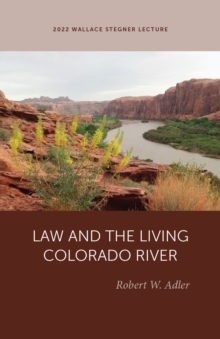
Managing Climate Risks in Resilient Cities Paperback / softback
by Lawrence Susskind
Part of the Wallace Stegner Lecture series
Paperback / softback
Description
Discussions on climate change generally focus on the necessity of reducing carbon emissions, while recognizing that such action will take a long time to materialize.
MIT professor Lawrence Susskind contends that communities can take action to combat climate change now, through steps that have the co-benefit of moderating the effects of flooding, heat waves, and drought—events already occurring with increasing frequency.
Measures such as strengthening basic utilities and infrastructure so they are less vulnerable to high winds and floodingwill provide short-term and long-term advantages.But such changes will happen only with widespread public engagement.
Public education and public opinion surveys are not enough.
Susskind and colleagues have been facilitating workshops with role-playing sessions where people consider how what they want and need can be meshed with the different wants and needs of others.
Dialogue focuses not on worldwideclimate change but on localized weather catastrophes.Climate risk is thereby translated into public health risk and people emerge with ideas for change rather than a mere summary of problems and disagreements.Susskind’s discourse serves as a blueprint for ways that government agencies and citizens can work together toward building climate-resilient communities.Presented on March 30, 2016 at the 21st annual Wallace Stegner Center Symposium.Copublished with the Stegner Center for Land, Resources and the Environment; S.J.
Quinney School of Law; and Special Collections Department, J.
Willard Marriott Library, the University of Utah.
Information
-
Available to Order - This title is available to order, with delivery expected within 2 weeks
- Format:Paperback / softback
- Pages:42 pages
- Publisher:University of Utah Press,U.S.
- Publication Date:30/03/2017
- Category:
- ISBN:9781607815631
Information
-
Available to Order - This title is available to order, with delivery expected within 2 weeks
- Format:Paperback / softback
- Pages:42 pages
- Publisher:University of Utah Press,U.S.
- Publication Date:30/03/2017
- Category:
- ISBN:9781607815631










